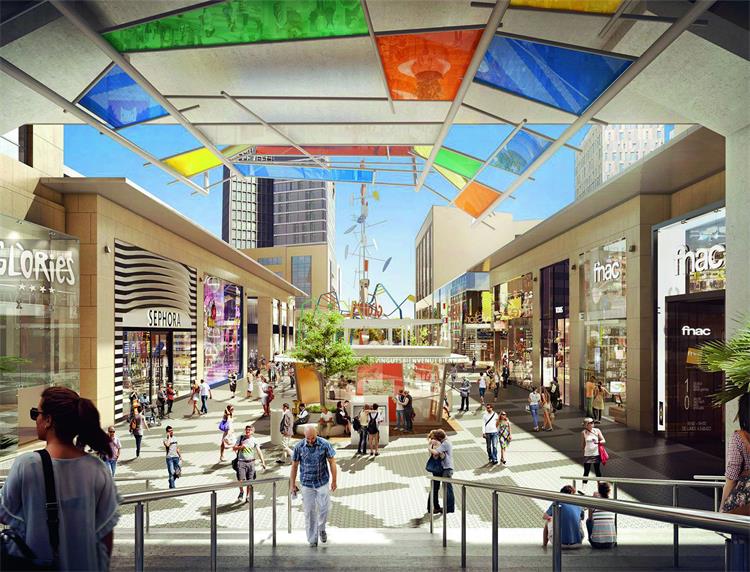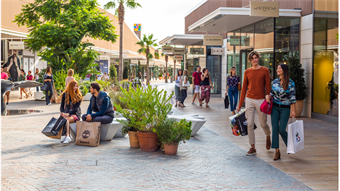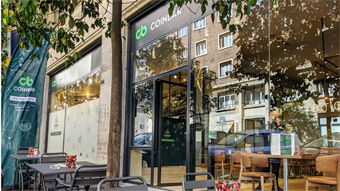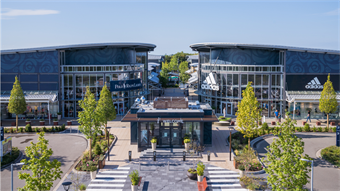Spanish retail market set for record year
- In Region in Focus
- 09:50, 10 November 2017
- 2275 Views

Spain is on track for record investments into retail real estate this year as the sector exceeds all expectations. Isobel Lee reports
Spain is on track to see all-time record investment volumes in its retail real estate sector this year in an extraordinary vote of confidence for the country’s economy, consumer trends and retail outlook, according to Savills’ Luis Espadas, director capital markets for Spain.
‘It’s quite likely that this year – depending on what happens in the last quarter – retail investment volumes will exceed the other sectors for the first time ever. This after record deals were achieved in the last two successive years,’ said Espadas. ‘It’s a very good sign.’
Key to the record figures has been continued interest from foreign investors, who represent 62% of the total, according to Savills, and invest both directly or through SOCIMIs, the local REITs. Global investment giants including the Canada Pension Plan Investment Board, LaSalle Investment Management, TH Real Estate, AXA, Intu and Hines have all been active so far this year, as well as AEW, Redevco Iberian Ventures and MDSR, the latter of which said it had moved from a ‘value add’ to a medium to long term position.
‘In retail, the majority of the buyers are international and institutional in origin,’ added Espadas. ‘Domestic Spanish investors have shifted their focus to hotels and residential assets as well as remaining committed to the office sector.
‘So the barriers for international investors are not so much domestic competition as issues of supply, and building permits for those pursuing a development strategy. It’s also worth saying that for investors who are aiming at significant investment volumes in Spain, retail is the only real choice, as most of the big ticket investments are in this sector.’
‘In the first half of the year, 44% of all commercial deals in Spain were retail real estate - normally we’d expect offices to dominate deal making,’ said Alejandro Sánchez-Marco, a director in Savills capital markets team in Spain. ‘Retail has always been behind offices in investment volume in former years but that’s no longer the case.’
A tale of two trends
Two key trends are shaping the retail sector in Spain, according to Gonzalo Senra, national director retail, CBRE Spain. ‘Firstly, sustained economic growth is driving retail sales and attracting new international brands to Spain,’ he said. ‘Secondly, the digital revolution is altering traditional retail concepts, forcing all players to either adapt to this new digital world or risk getting left behind.’
While Spain’s consumers haven’t been at the forefront of the digital revolution in comparison with some of their northern European peers, e-commerce sales are growing 20% per annum, according to CBRE. Around €24 bn of sales took place digitally last year, although this still only represents 4% of total retail volumes. This is considerably lower than levels seen in other countries and suggests that the growth trend will continue long-term.
‘Consumers increasingly distinguish less between online and offline channels, and their new habits are driving retailers to focus on both channels at the same time, thereby creating a new ‘phygital’ order,’ said Senra. While bricks and mortar stores remain consumer’s favourite shopping format, it is increasingly difficult to draw people away from the comfort of their homes. ‘Retailers are therefore opening large flagship stores to entice people in. These are stores that are focused on the shopping experience, increasing the range of services on offer and installing new technology such as OSS, Locatus and Geoblink, the latter also allowing them to personalise their marketing strategies,’ Senra added.
Spain’s economy expanded again in the second quarter of the year, up a seasonally-adjusted 0.9% on the previous three months, with GDP topping the country’s pre-crisis levels. Year-on- year, GDP grew 3.1% in the second quarter, a figure marginally above the 3% increase observed in the previous quarter, with healthy domestic demand and high tourism flows contributing to the result. Spain’s Central Bank expects the economy to grow 2.8% in 2017 and predicts a 2.3% expansion in 2018.
International investors diversify in Spanish retail
Overseas investors are demonstrating a significant appetite for a range of asset types and retail investments as they deepen their commitment to the Spanish retail market. Significant transactions this year have included some major shopping centre deals, including UK shopping centre REIT Intu’s acquisition of Ivanhoé Cambridge’s Xanadú mall in Madrid for €529 mln - and its subsequent sale of 50% of the asset to TH Real Estate. Klepierre purchased Nueva Condomina, the leading shopping mall in Murcia, for €233 mln. AXA and Sonae Sierra invested €110 mln in Area Sur. However, mixed- use assets, retail parks and even food markets have also come under the spotlight.
In March, Hines and Universal-Investment deployed €190 mln in two high street property transactions in Spain on behalf of their €1.3 bn mandate from German pension investor BVK. The two high street retail assets with associated office space are located in Madrid and Barcelona, and will be significantly redeveloped to create flagship retail stores and grade A offices.
AEW, which opened its Madrid office headed by Carsten Czarnetzki in January of this year, purchased another prime high street retail asset in the capital for €50 mln in August. 45 Calle de Fuencarral is one of six assets acquired by AEW over the last two years in Spain on behalf of various mandates, and brings its assets under management in the Spanish market to €406 mln.
Savills advised fund MDSR Investments on the acquisition of its second portfolio of hypermarkets in Spain, for a total value of almost €150 mln. Sold by Tristan Capital, this deal represented the largest transaction of hypermarkets and commercial galleries in the country this year. ‘This transaction emphasises our strong belief in the economic growth fundamentals of the Spanish market,’ said Annalaura Benedetti, head of MDSR in Spain. The deal raises the value of MDSR’s Spanish assets to around €300 mln.
Redevco Iberian Ventures, the joint venture between pan-European retail real estate investment management company Redevco and funds managed by global alternative asset manager Ares Management, acquired Madrid’s iconic Mercado San Miguel, the renowned covered gastronomic market, for €70 mln. As a magnet for foodies and a fixture on Madrid’s tourist trail, the property has no vacancies and a long waiting list of prospective tenants. Ares and Redevco announced the creation of Redevco Iberian Ventures in September 2015, targeting €500 mln of value-add and opportunistic investments. The San Miguel deal followed Redevco’s divestment of nine retail parks across Spain to South Africa’s Vukile Property.
Retailers bullish on Spain
Cushman & Wakefield notes that retail sales in Spain have improved steadily since 2013, with 2017 continuing the growth trajectory. Retail space demand is affecting rents in near prime and secondary locations, particularly for fashion and food & beverage (F&B) spaces. According to CBRE, F&B sales rose 6.2% last year, spurred by new formats and market entrants, while accessories, sportswear and cosmetics sales are also in growth mode. 2016 saw around 30 new international entrants to Spain’s retail market, and 2017 has seen the trend continue.
‘Brands are currently expanding in Spain in mass-market fashion retailing,’ said Savills’ Sánchez- Marco. ‘Uniqlo recently opened its first store in Spain, choosing a high street location in Barcelona, and has reached a recent agreement to open another store in Madrid after circling around for a couple of years without finding the right space. Primark and Inditex’s secondary brands are also expanding. A few retailers are contracting – such as C&A, which has been in the Spanish market for a long time, but has lost the wind in its sails. However, we see that mass market fashion is in general expanding.’
He added: ‘The opposite end, luxury, is also in growth mode, but most luxury brands are looking for space in Madrid and Barcelona, and tend to mainly stick to those two locations. It’s also difficult for them to find the right units because they are looking for very specific locations, but they are definitely on the hunt. If you compare Madrid and Barcelona’s highstreets with other major European cities, you’ll see that they’re still lacking several very well-known brands.’
Spanish retailers pursue global expansion
The Inditex stable of brands has continued its steady growth in Spain this year, whilst also pursuing an ambitious external expansion strategy. Like for like sales grew 6% in H1 2017 globally, showing positive improvements across all geographies. In the first six months of the year, Inditex opened stores in 35 markets, to operate 7,405 stores in 93 markets round the world by the end of June 2017.
Inditex – sales growth y.o.y. across all concepts
But Inditex isn’t the only Spanish ambassador in the retail space. A decade after its establishment, young fashion house Bimba y Lola announced global profit increases of 24% in the first half of 2017, increasing its workforce by 12% as it moved to open a raft of new stores around the world. At present, the business which originated in Bilbao has 225 stores in 13 countries, and plans to add another 20 in the coming months in geographies including the UK, Portugal, Korea, Kuwait, Mexico, Chile, Columbia and France. The company is also aiming for further growth in Spain, via concessions in department store El Corte Inglés as well as stand-alone units.
Cult jewellery brand UNOde50 (meaning literally ‘one of 50’), a label which has been producing limited-edition jewellery pieces for around 20 years has kickstarted a rapid expansion in recent times, doubling global sales in the past five years and increasing its product line. Beyond its 20 or so Spanish bricks and mortar locations, it has another 30 shops in the United States and a handful of stores in Europe’s design capitals including Milan, London, Paris and Rome. It plans to add another 100 stores worldwide in the next few years and growing the brand’s availability in other sales locations.
Thomas Meyer’s Desigual is expected to return to growth mode in 2017 after two years of declining sales, particularly in Europe. Expansion particularly in Latin America – which now represents 10% of turnover – will lead to further store openings from 2018. Global sales for the Barcelona- headquartered company for the end of 2017 are expected to return to 2013 levels, i.e. around €830 mln.
High street or shopping centre?
In the high street, demand for units remains strong, with supply-side issues proving the main limiting factor for retailer growth after considerable activity in recent years. The number of out-of- town retailers opening stores in the city centre is nevertheless increasing, with brands including Kiabi, Media Markt, Leroy Merlin and IKEA experimenting with downtown formats to battle the e- commerce trend.
‘Decathlon also recently opened three stores in prime high-street locations in Madrid, in the streets of Ortega y Gasset, Fuencarral and Orense, making them one of the key players in the out-of- town- retailer invasion,’ said Sánchez-Marco.
CBRE’s shopping centre index shows that footfall in Spanish centres increased 2.5% in 2016 year-on-year while sales increased 1.5%. The average shopping centre occupancy rate rose to 93.5% in Q1 2017. ‘The improving backdrop for shopping centres can be seen in the results presented by owners, with net revenue growing thanks to higher rents and occupancy rates, as well as less temporary rental discounts and other non-recoverable expenses,’ said Senra.
‘While demand for shopping centre units fell during the crisis, as many retailers put their growth plans on hold, that’s changing significantly, notwithstanding the considerable capital expenditure required for growth,’ Espadas said. ‘We’re seeing rental increases in the best shopping centres, although Spain’s more average shopping centres are still waiting to catch up on that front. We’re more in a phase of rent stabilisation, characterised by higher demand but rents not yet moving upwards significantly.
‘As yields keep tightening, many landlords are choosing the moment to sell,’ Espadas added. ‘Those that bought during the lowest point of the cycle are capitalising on increased demand and rising prices for stock.’
Development is ‘best investor strategy’
Despite the booming interest in acquiring retail assets across the board, for Alejandro Sánchez-Marco, director capital markets – high street, Savills Spain, creating new schemes and repositioning others remain the most attractive investor strategy. ‘In the core market there is little opportunity for proper returns, although there is some scope for rental growth. The best opportunities will come from development,’ he said.
Major schemes already underway include Compagnie de Phalsbourg’s Open Sky Shopping Center and The Village, which will bring 75,000 m2 of GLA to the Torrejon de Ardoz area of the Spanish capital on its launch next year. LSGIE is developing Plaza Rio 2, a downtown shopping centre with 39,000 m2 of space, while key regional shopping centre developments include Alisios in Gran Canaria’s Las Palmas, an ambitious, 64,000 m2 scheme. Torrecardenas will provide 60,000 m2 to the catchment area of greater Almeria when Bogaris Retail’s centre opens in 2019.
Grupo Sambil’s Sambil Outlet Madrid opened earlier this year, providing 42,000 m2 GLA in the town of Leganés near the Spanish capital. Both the retail park and the outlet centre trend continue, with Iberebro constructing the Torre Village in Zaragoza with 59,00 m2 of space.
Meanwhile, Sonae Sierra in collaboration with McArthurGlen are working on a new outlet scheme in Malaga, comprising 30,000 m2 of space. ‘Representing an investment of €115m, including the two phases, this is a one-of- a-kind project in the Costa del Sol,’ says Sonae Sierra CEO Fernando Guedes de Oliveira. ‘Firstly, because there are no other designer outlets in Southern Spain and secondly, because it involves the entry of the McArthurGlen Group into the Spanish market.’ The project’s first phase is scheduled to open in the summer of 2018, with the second phase arriving in 2020.
‘The retail park sector is also growing a lot. While there’s a very high commercial density of shopping centres, for retail parks there are many opportunities. Spain is still behind the average density in Europe for retail parks, so there are many local developers and regional developers undertaking new retail park projects in Spain at the moment,’ said Espadas.
‘Retailers still want to focus on Madrid and Barcelona, which have the highest commercial density, but there are other areas of interest,’ Espadas added. ‘Catalonia in general is certainly interesting, as the commercial density there is pretty low. Development is already happening in the Balearic Islands but that is also an area of potential. We’ll see more schemes opening there in the next three years.’
‘The only note of caution would be that in both Catalonia and the Balearic Islands, local and regional governments have been quite protective of small and local retailers, and have issued very few building permits for large schemes, which hasn’t been the case, for example, in Madrid,’ said Sánchez-Marco. ‘That’s why Catalonia - despite having all the right macros - has a relatively low density of shopping centres per inhabitant. There are opportunities here, but they depend on policies.’
Due to this issue, many property owners are turning to refurbishments and extensions to generate a new lease of life for their built assets. ‘It’s worth noting that in most of the Spanish regions there are opportunities available in terms of differentiation,’ noted Espadas. ‘Many shopping centres look tired and resemble the competition, so this has become crucial.’
Sonae Sierra, for example, has commenced major interior refurbishments at its GranCasa, Max Center and Valle Real assets. GranCasa in Zaragoza will be significantly repositioned with a new food court, while the concept of the centre’s third floor will be changed to provide a completely different offer. In Barcelona, Unibail-Rodamco unveiled its extended and refurbished Glories shopping centre on 9 November.






